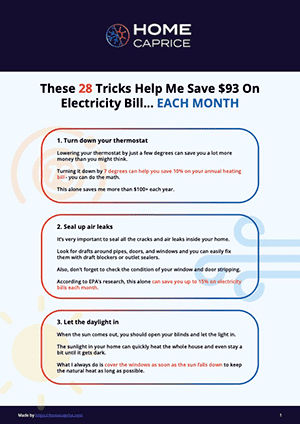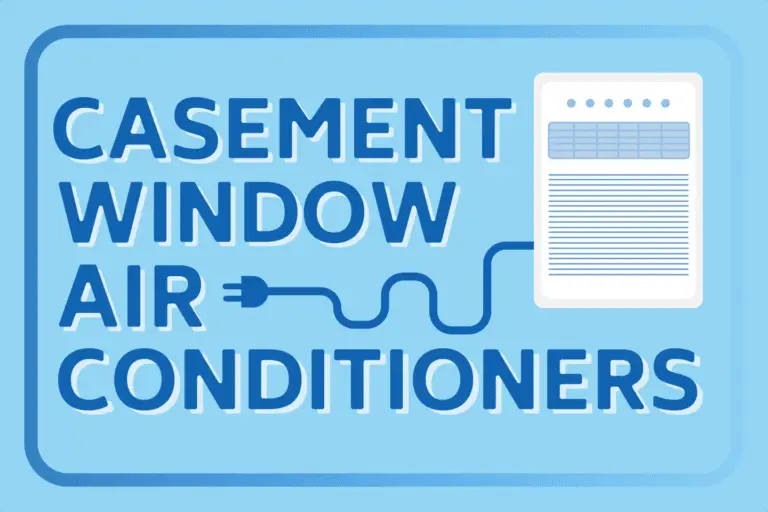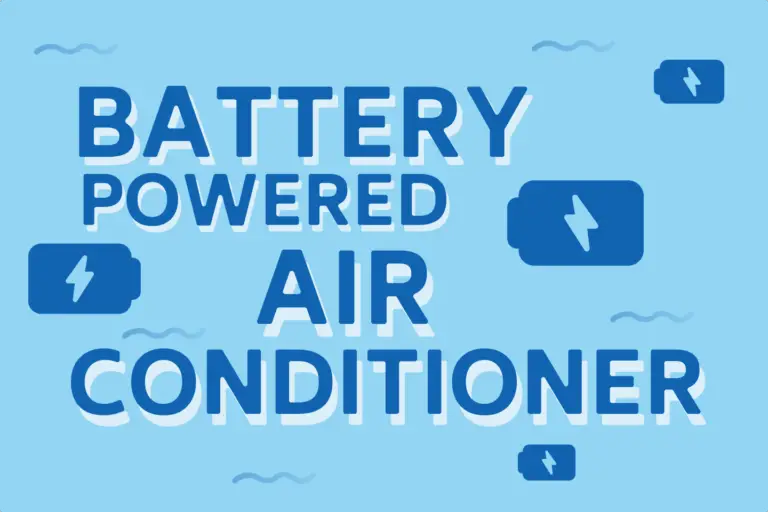One of the common issues with window air conditioner units is leaking and dripping water.
If you have the same issue, don’t worry – you’re certainly not the only one.
You’ll learn some of the most common reasons why your window AC is leaking water and how serious of an issue it is.
P.S. Once you identify the issue, check out these 2 articles below to see how to fix your leaking AC
And now, let’s get straight into it!
13 Most Common Reasons Why Your Window Air Conditioner Is Leaking Water
1. Clogged Condensation Drain
One of the most common reasons behind dripping water is blocked or clogged condensation pipes.
If this line gets clogged up with dust, mold, or dirt, water will have to back up and start dripping.
The good side of smart air conditioners is that they can automatically shut off if they detect overflow, so if you have an older unit, you’re at higher risk of having this issue.
2. Dirty air filters
You’d be surprised how often this issue is. I would say every fourth air conditioner has dirty air filters.
An air filter is meant to soak up excess moisture from the inside of your home so it doesn’t get too humid, but if it is never changed or used, it will lose its ability to soak up excess water and you will end up with an overflow.
Because of that, once the ice starts melting, it will drip water into the pan and overflood it.
It’s easy to maintain them, so simply check your air filters at least every 90 days.
Here’s a helpful guide to fully clean your window AC without removing it.
3. Damaged Condensate Pan
This is usually the case with older air conditioner models because the drain pan collects rust and leaks water through the pan.
You can quickly check it under the AC unit and inspect it further for corrosion or any possible leaks.
4. Low refrigerants
A lot of people don’t know this, but this has a huge impact on the pressure of the unit and it can cause evaporator coils to freeze during lower temperatures.
Same as with dirty air filters, the coils get frozen and once they start melting, the water overflows the drain pan.
The biggest issue with this is that in most cases you might need to replace your entire unit – it all depends on how low refrigerant levels are.
5. The Refrigerant Levels Are Too High
This is also a big issue!
If there is a large amount of refrigerant in your air conditioner, it can cause water to condensate and drip from the AC unit.
One of the first things that you want to do is have your AC inspected by a professional.
6. Broken condensate pump
If you have your air conditioner installed in the basement, you will have an additional condensate pump that provides the water for the outside area.
The pump might be damaged (or even faulty installed) which causes water to leak in your unit.
In my opinion, you shouldn’t try to repair it on your own as this issue requires experienced technicians.
7. Faulty installation
It’s very similar to a broken condensate pump, but if you noticed water leaking in the first few months of your new AC unit – it’s probably installed improperly.
The good side is that most AC units have a warranty and you can call a technician to re-install the unit without any extra costs. Or you can fill in the form here to get offers from your local contractors.
Also, it might be that your air conditioner is “out of battery” and you can easily recharge any window air conditioner.
8. The Thermostat Is Faulty
If the thermostat has gone bad, your AC system will continue to condensate water and it can often cause an overflow.
One of the first things that you want to do is check your thermostat and see if anything looks unusual or out of place.
9. The Drain Valve Has Leaked
If any part of your AC drain valve leaks, it could cause water to build up around your AC unit, which would then lead to an overflow.
Not sure if your drain valve is leaking? You can check by filling up a container with water and putting it underneath whatever the unit drains into.
If there is a leak, you should be able to see if there is water on your flooring near your air conditioner.
10. The Drain Pipe Has A Leak
If the AC drain pipe is leaking, that can cause water to build up around your AC unit, which then leads to an overflow.
You might notice this when you look at the floor near where your unit drains because there could be puddles of water building up. One of the first things that you want to do is check for leaks in the drain line and make sure everything looks okay.
12. Poor Or Missing Condensate Containment Tray
A condensate containment tray is meant to hold all excess condensation from your AC unit so it doesn’t drip onto your flooring below.
If it’s missing, broken, or poor, then the excess water will just drip onto your flooring. You will be able to know if you have one installed because it should be visible on your AC unit itself.
13. Wet Coil Frozen Or Seems Wet
If the coil on your AC unit is wet, frozen, or seems very damp then that can cause water to build up around your air conditioner which will lead to an overflow.
One of the first things that you want to do is inspect the coils of your air conditioner and make sure they are dry and clean as a whistle.
Can I Still Use My AC If It’s Leaking Water?
Yes, you still can use your air conditioner even if it is leaking water. But the consequences will just be worse for your home or building.
Not only can your floors get ruined, but it can cause excess water damage (very expensive!) on the inside of your home, especially in your wall’s interiors.
Therefore it’s very important to get your leaking AC fixed right away! Find a local HVAC contractor here.

Download this FREE cheat sheet to find 28 tricks that can help you save on your electricity and heating bill each month.
Click here to get a FREE Cheat-SheetUnderstanding Window Air Conditioning Systems
Window air conditioners are different from other units and they can fit in almost any window – sliders, double-hung windows, normal windows, etc.
A lot of people only know that air conditioners work by blowing cold air into your home and exhausting warm air outside of your home. Window AC units are very unique, but they all work by the same (or similar) principle.
Beneath the cover of each window AC, you’ll find a blower and fan on the inside of the unit. On the opposite side, there’s a compressor that exhausts the warm air from your home. Most units have a drip pan or drain which has the job to deal with excess water or overflowing.
As I said earlier, there are tons of different models that have sling rings.
The name says it all, they sling the water on the coil instead of letting it drip back into the system.
It’s always a smart idea to read your user manual to know the type of your model before finding the exact issue of your unit.


Download this FREE cheat sheet to find 28 tricks that can help you save on your electricity and heating bill each month.
Click here to get a FREE Cheat-Sheet

![Trane XV18 Air Conditioner After 1 Year [In-Depth Review]](https://homecaprice.com/wp-content/uploads/trane-xv18-review-768x512.png)
